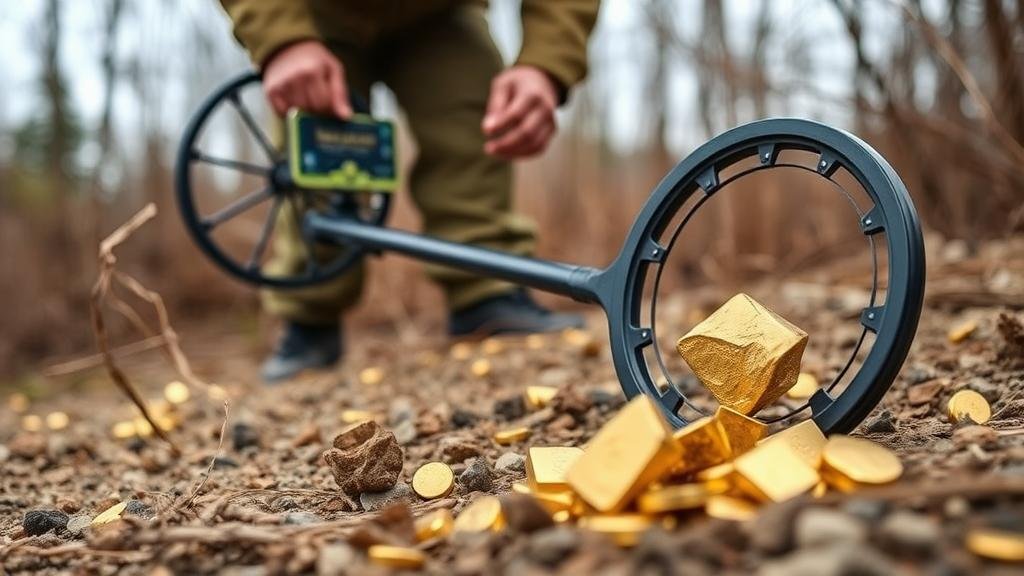How to Use Metal Detectors to Locate Gold Nuggets
How to Use Metal Detectors to Locate Gold Nuggets
Metal detecting for gold nuggets is an exciting adventure that combines technology and the thrill of discovery. Gold, being a highly sought-after precious metal, presents an enticing target for treasure hunters. This article will provide a comprehensive guide on how to effectively use metal detectors to locate gold nuggets, offering valuable insights and practical strategies.
Understanding Metal Detectors
Metal detectors are electronic devices that use electromagnetic fields to detect metal objects buried underground. consist of a transmitter coil, which generates the electromagnetic field, and a receiver coil, which detects changes in the field caused by metallic objects.
For locating gold nuggets, it is essential to select a metal detector specifically designed for gold prospecting. These devices typically operate at higher frequencies, making them more sensitive to small gold pieces. For example, detectors like the Minelab GPZ 7000 or the Garrett AT Gold are popular choices among prospectors.
The Science of Gold Detection
Gold nuggets are often found in specific geological formations. Understanding the science behind gold’s behavior in nature can significantly enhance your chances of discovery. Gold is typically located in the following areas:
- Riverbeds and Streams: Erosion can deposit gold nuggets in the riverbeds, making these areas prime spots for prospecting.
- Dry Washes: Regions where water flow has historically eroded gold deposits can yield findings in arid climates.
- Mining Areas: Old mining sites can still harbor undetected gold nuggets, especially in tailings left behind.
Techniques for Effective Gold Prospecting
To maximize the effectiveness of metal detecting in your search for gold, consider employing various techniques outlined below.
Choosing the Right Location
Successful gold detection begins with location. Research local geology and map historical mining areas. Geological maps can provide insights into where gold deposits are likely to be found. Tools like the United States Geological Survey (USGS) online resources can guide prospectors in identifying promising areas.
Setting Up Your Metal Detector
Once you have selected a location, its imperative to properly set up your metal detector to optimize its performance:
- Ground Balance: Adjust the detector to eliminate interference from mineralized soil.
- Frequency Tuning: Set the device to a higher frequency for better sensitivity to small gold nuggets.
- Discrimination Settings: Customize settings to filter out less desirable metals and focus on gold detection.
Effective Search Techniques
When searching, consider the following techniques to improve your chances of finding gold:
- Sweeping Patterns: Use a systematic approach to sweep the search area. An overlapping pattern ensures that no area is overlooked.
- Slower Movement: Moving slowly allows the detector to pick up smaller signals that fast movement might miss.
- Check Target Signals: When you receive a signal, adjust the coils angle and height to get a clearer reading.
Real-world Applications and Case Studies
One notable example is the story of a recreational prospector who used a high-frequency metal detector in the Sierra Nevada mountains. After months of searching, he located a 1.5-ounce gold nugget buried just 6 inches below the surface near a riverbed. This success underscores the importance of both equipment and technique.
Another case involved a group of prospectors who focused on old mining sites in Alaska. Through meticulous research and appropriate metal detecting techniques, they unearthed several significant gold deposits, demonstrating that patience and strategy are critical to success in this field.
Conclusion and Actionable Takeaways
Metal detecting for gold nuggets can be a rewarding and thrilling experience with the right equipment, knowledge, and techniques. Focus on selecting the appropriate detector, understanding the geology of your target area, and employing effective search strategies.
To enhance your prospects of success, remember to:
- Conduct thorough research on potential locations.
- Properly set up your metal detector before each search.
- Use systematic and slow sweeping techniques during detection.
With diligence and commitment, you will increase your chances of uncovering hidden treasures in the form of gold nuggets. Happy hunting!



